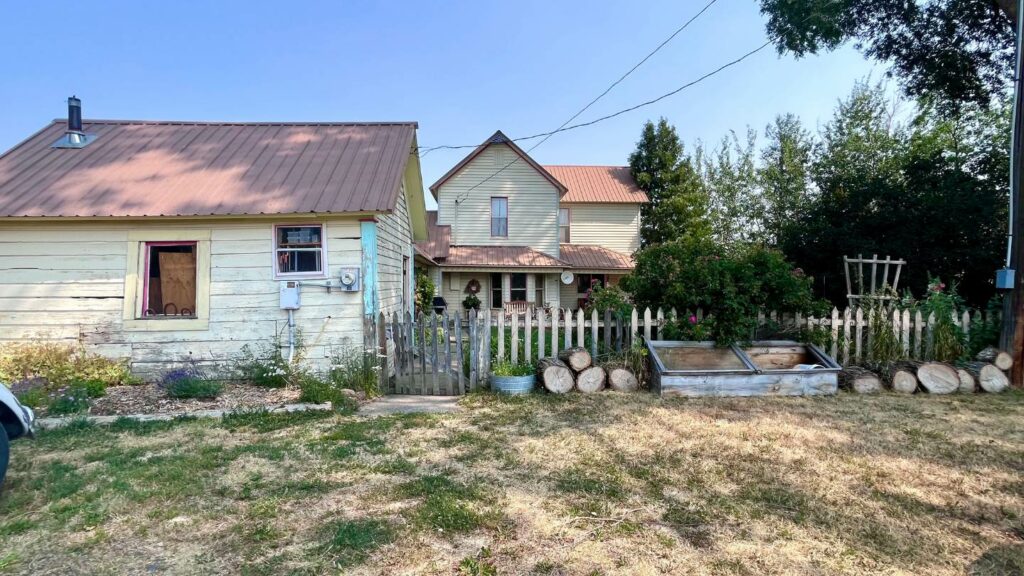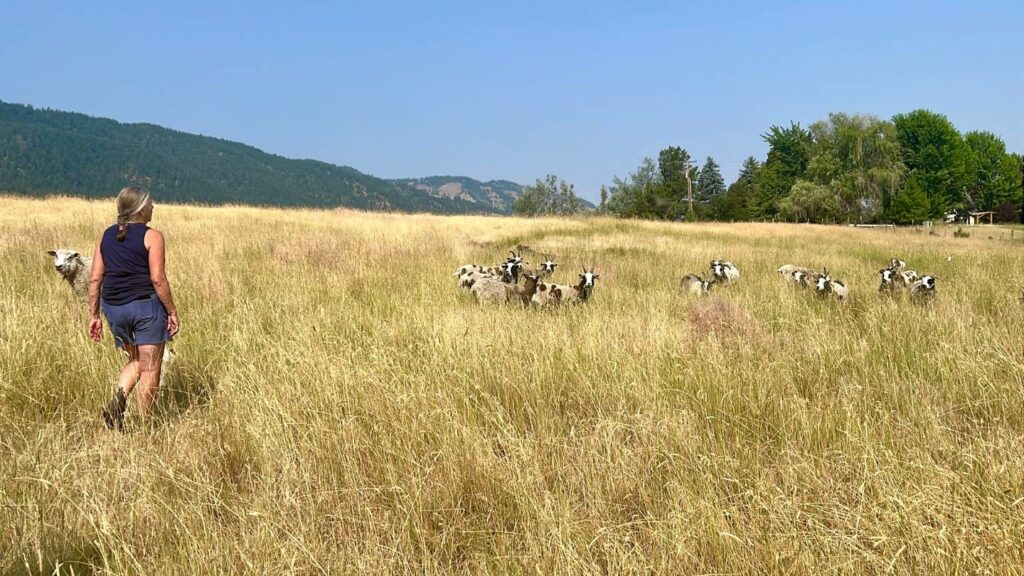Wolves on the Doorstep Test Sheep Ranchers in Small Town Oregon
The 200 residents of Lostine, Oregon, never expected their small town to become a hotspot for wolf conflict.

"As discussed below, wolf protection is very difficult.
NOTE: this article was originally published to Onland.WesternLandOwners.org on September 6, 2024. It was written by Avery Shawler.
The 200 residents of Lostine, Oregon, never expected their small town to become a hotspot for wolf conflict.
Surrounded by farm fields and with no recent history of wolf conflict, residents were shocked when wolves began killing sheep in pastures adjacent to their homes.
Kate Barrett and Paul Survis of Ruby Peak Farms were among the first to experience depredations – losing three ewes and 19 lambs in a single night last year. Kate and Paul raise a flock of about 20 registered Jacob sheep – a striking heritage breed that can have up to six horns. However, this year, despite penning the sheep at night and using Fox Lights and fladry, they lost all three of their rams and one of Kate’s favorite ewes, Windy. After 24 years without predator conflict, Kate and Paul had lost 26 in 12 months.
That’s when Kim Kerns, WLA contractor and a sheep and cattle producer in nearby Umatilla County with experience mitigating conflict with wolves, stepped in to help.“The situation in Lostine was really unique in that it occurred in a populated area.” Kerns noted. “The sheep involved were intensely managed including being night penned in what I would consider a very secure and safe manner.”

Kate said, “The day my last remaining ram was killed, Kim showed up with her car crammed with rolls of electro net, solar panel, and energizer…It was a hot day, and we were already tired, but Kim got us lined out quickly.” After assessing the landscape and game camera footage of earlier wolf depredations, Kim decided to reinforce the existing barn lot night pen. They installed four 180 foot rolls of electronet 2-3ft away from the existing fence, which would require wolves to jump two fences in one leap. Kate weedwhacked while Paul and Kim rolled out the netting, which took about 1.5 hours to set up. “And then we had to hook up the energizer and solar panels and hope it all worked!” Kate joked.
Kim was also feeling anxious about the set up. “I’ll admit I was pretty nervous going into that first week. I felt that if the wolf figured out how to thwart the electronet our sheep protection tool chest would be pretty depleted.”
Luckily, it worked. Kate shared, “We caught the wolf on our trail cams checking out the fence, getting zapped, and hightailing it out of here.” Unfortunately, this caused that wolf to kill sheep owned by a neighbor about a mile away, but now that neighbor also has an electronet installed. In fact, Kim put on a workshop for other producers in the community, who along with other concerned families, formed a grassroots group called the Lostine Livestock and Community Protection Association. Kate described, “We got a whole course in wolf prevention, and quite a bit of info on wolf ecology from Kim, as well as lots about volts, and amps, and grounding, and charging. I was so happy to be working with someone who understood the heartache and stress of losing members of my flock, and had the practical experience to make it stop.”
Despite the success, Kim noted how context-specific nonlethal measures are, “I think the most important thing to consider when implementing nonlethal predator mitigation tools is that not every tool fits every situation, and not every tool works the way you think it will. Every predator is unique and has figured out a method that works for them, so our strategies often require some creativity. It’s really important to size up the situation, the livestock, and the area you’re trying to defend.”

Since installing the electronet, Kate hasn’t experienced more losses. However, she remains vigilant, testing the charge on the fence daily, especially because late summer can bring increased conflict as wolf pups’ nutritional requirements increase and wild prey become harder to kill. Recently, Kim checked in with Kate to troubleshoot some charging issues. As Kate put it, “I am still on the learning curve for making electronet my friend, but our relationship has a firm foundation thanks to Kim.”
Like many ranchers, Kate has had to adapt to changing conditions. “Just like climate change – if I can learn to farm with less water, and hotter summers with more temperature variability, and work in smoke for 2 or more months a year, I can learn to keep my sheep safe,” she said. “I am so grateful WLA and Kim were ready, willing, and able to step up and help me learn to deal with my new reality of raising sheep in wolf country.”
Despite the steep learning curve of dealing with wolf depredations, and having to rebuild their flock after such a huge hit, Kate remains hopeful, “I have found another ram, and hope to attempt to lamb next year without any predation losses. I feel so much more prepared to keep my flock safe. And I know who to call if things go bad.”
